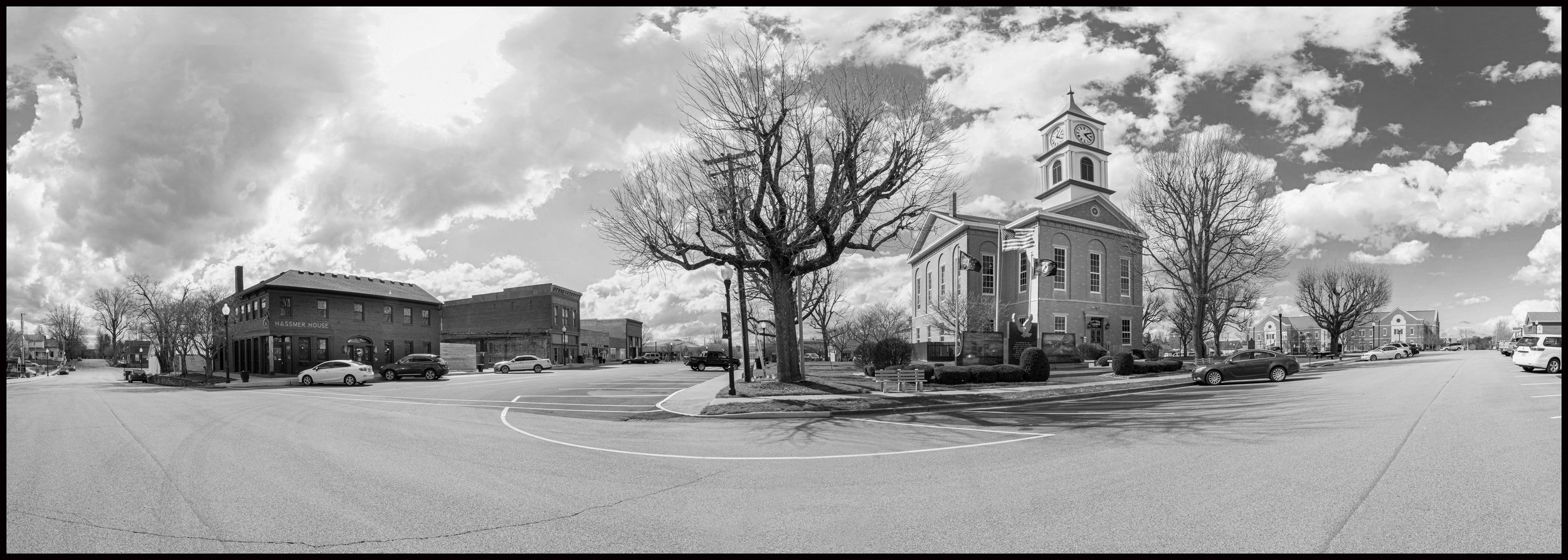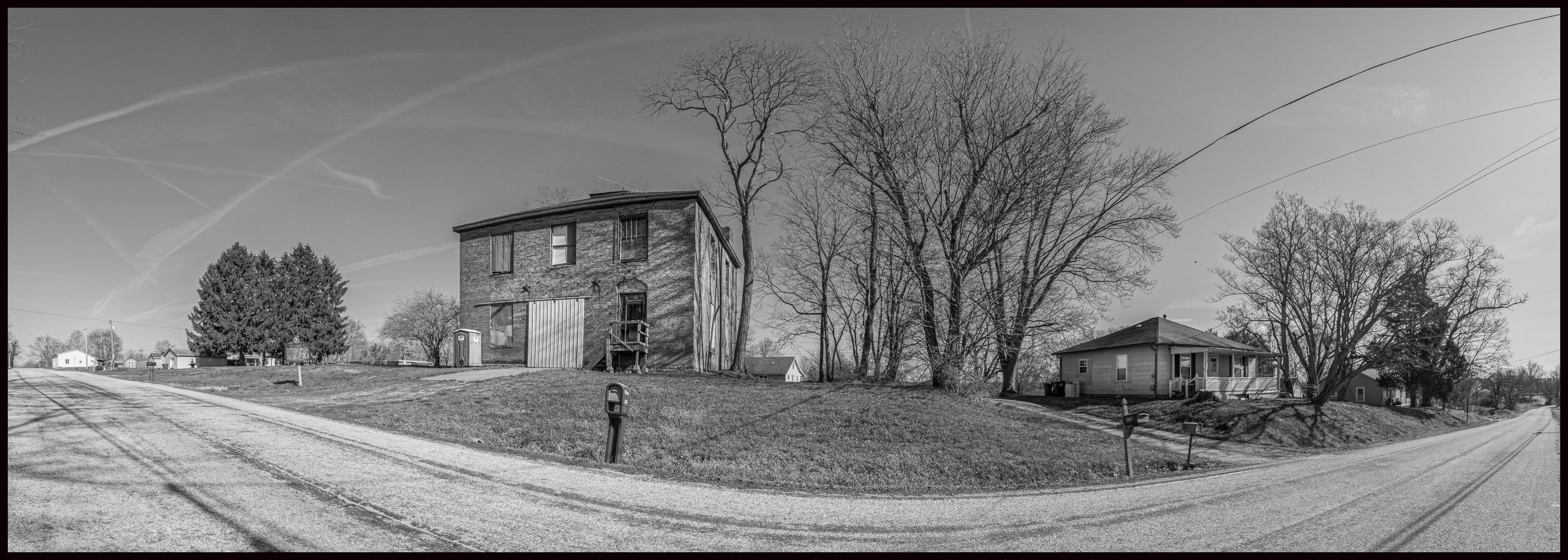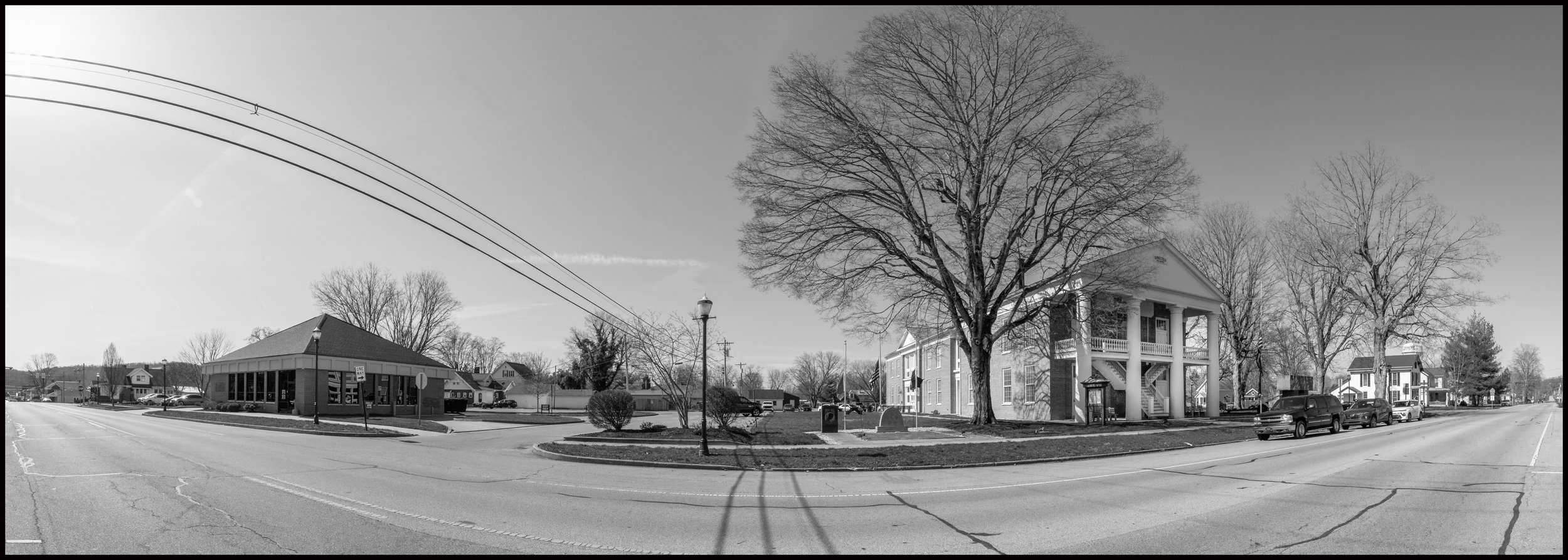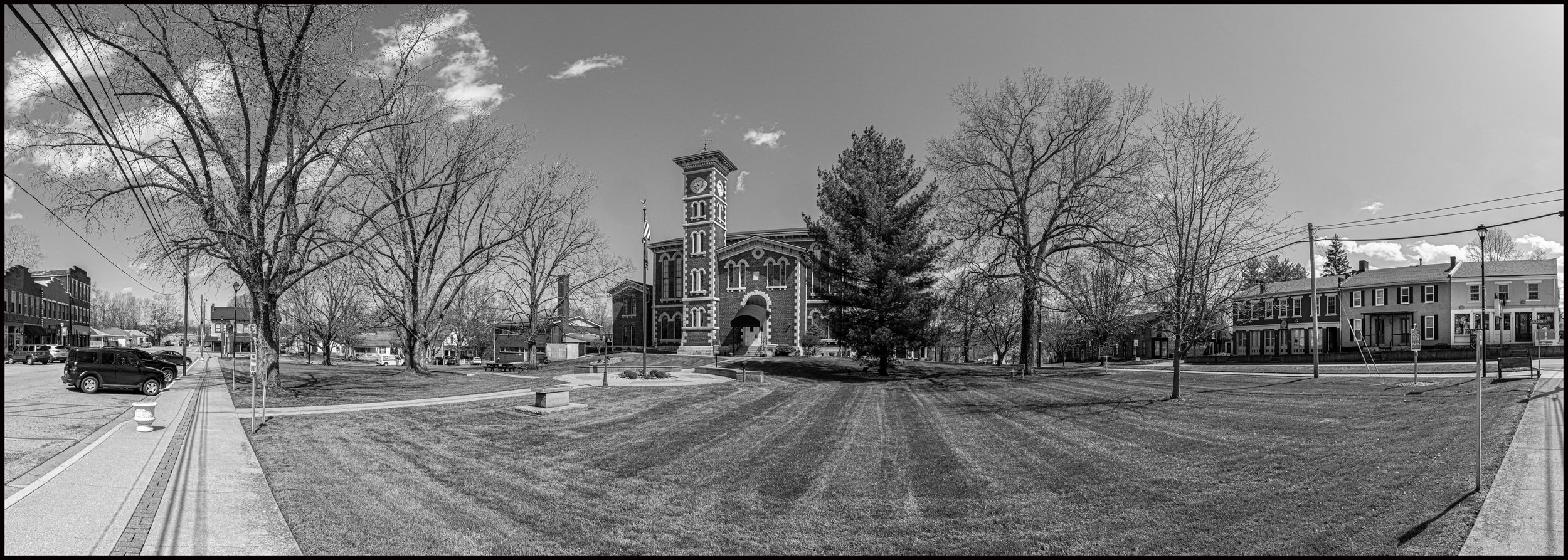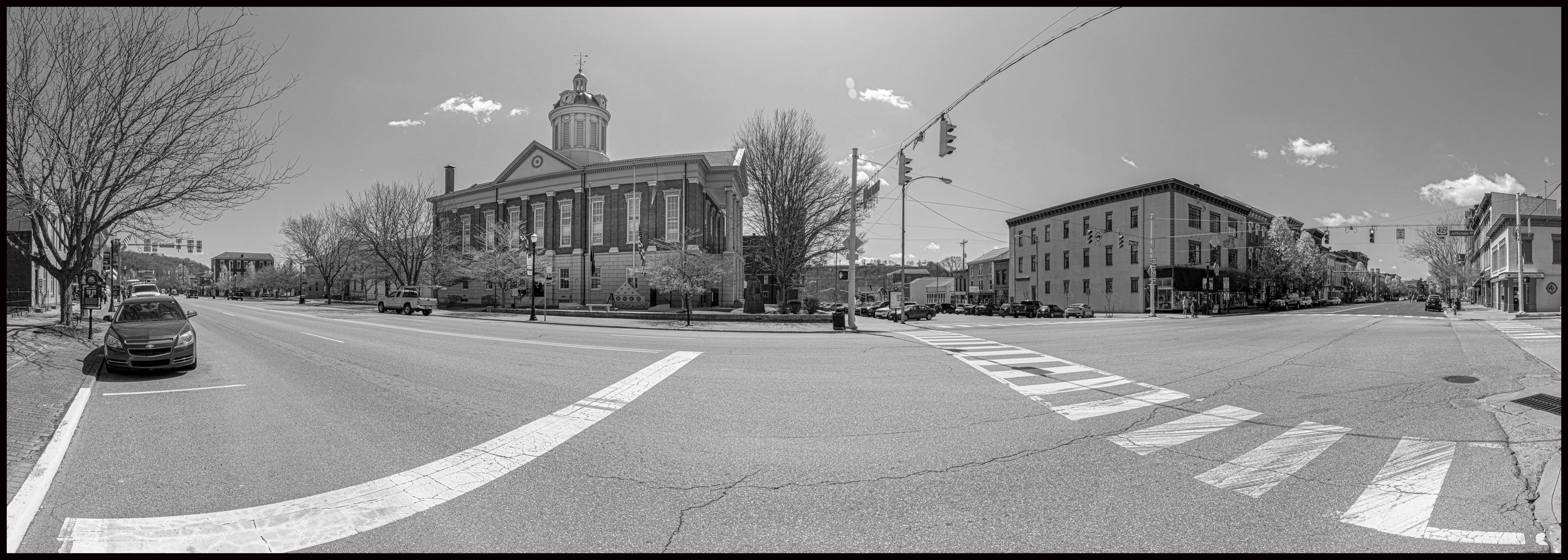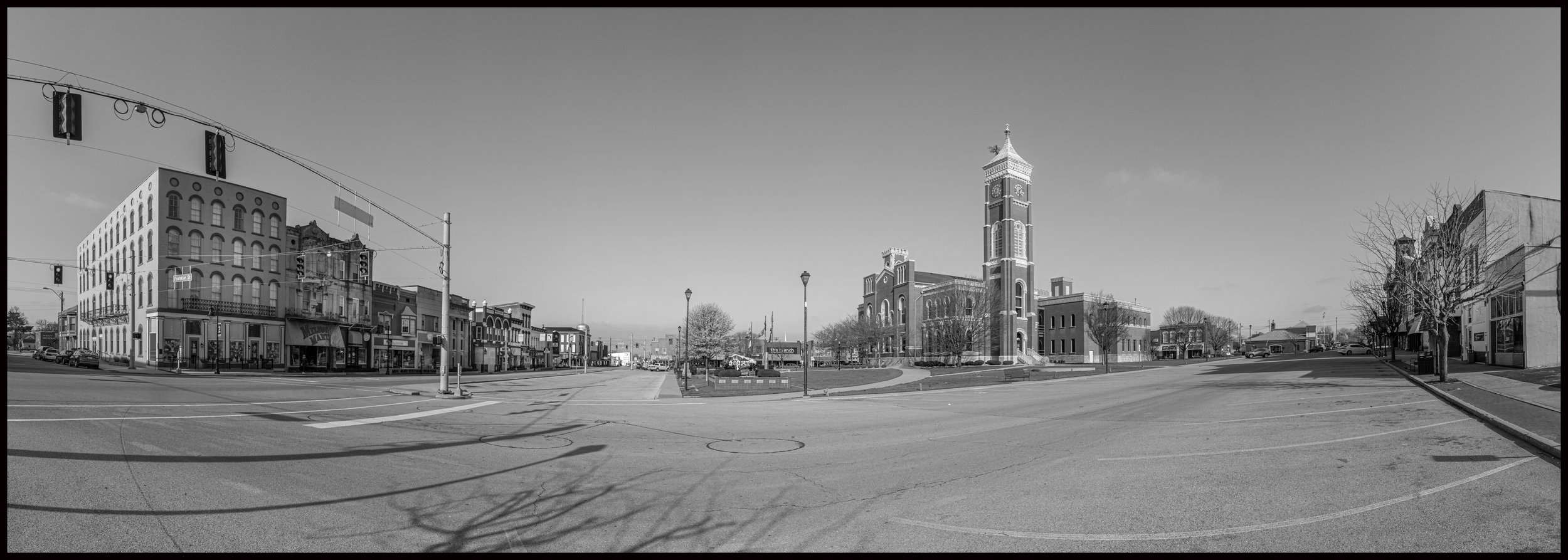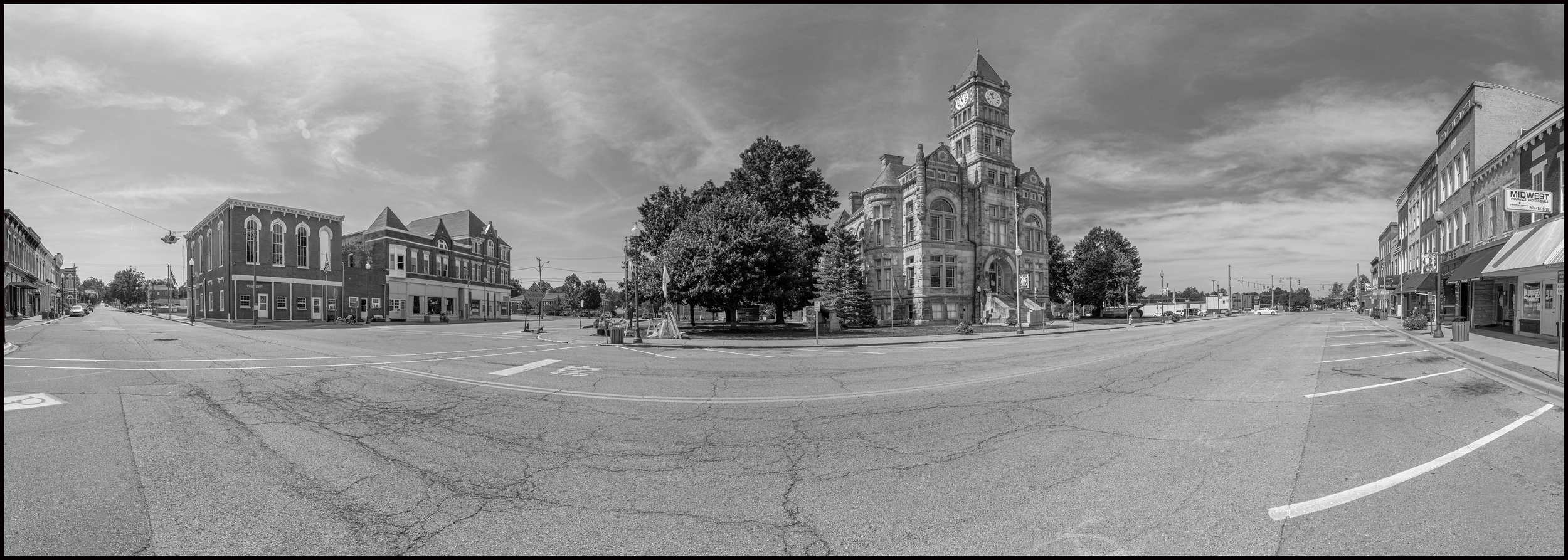Ripley County Courthouse, Versailles, Indiana. Construction on the Greek Revival style brick building began in 1860 and took three years to complete. On July 12, 1863 Confederate General John Hunt Morgan and his Raiders occupied the town, seized the county treasury, and looted the Jewels of Masonic Lodge #7. Upon discovering the Lodge theft Morgan, a Freemason, ordered the Jewels returned. Morgan’s 46 day, 1000 mile raid came to an end on July 26, 1863 when he surrendered to Union forces near West Point, Ohio.
Dearborn County Courthouse, Lawrenceburg, Indiana. Located at the corner of West High and Mary Streets (& one block north of the Ohio River) the three story Greek Revival structure is constructed of Indiana limestone and was completed in 1873. The county seat, established in Lawrenceburg in 1803, was moved to Wilmington from 1836-1844 but eventually moved back to the Whiskey City when the lands south of Laughery Creek became Ohio County.
Wilmington Court House, Dearborn County, Indiana. Located 2 1/2 miles west of the Ohio River this old brick building served as the third courthouse in Dearborn County from 1836-1844. When Ohio County was formed (1844) from lands south of Laughery Creek, the county seat of Dearborn County moved back to Lawrenceburg.
Ohio County Courthouse, Rising Sun, Indiana. The struggle over courthouse location in Dearborn County was settled by the Indiana Legislature on January 15, 1844 when Ohio County was created and the county seat moved to Rising Sun. The cornerstone for the new Greek Revival structure was laid in July, 1844 and construction completed in 1845. Ohio County is the oldest continuously operating courthouse in Indiana.
Switzerland County Courthouse, Vevay, Indiana. Switzerland County, bounded on the south by the Ohio River, was established in 1814 - two years before Indiana became a state. Named after early inhabitants from its namesake country, the county was home to the first commercial wineries in the United States. Construction on the courthouse was completed in 1863 and included a large fire proof vault to protect county records.
Jennings County Courthouse, Vernon, Indiana. Construction on the Italianate structure began in 1857 and was completed in 1860, with the limestone accents coming from local quarries. On his infamous raid during the Civil War, Confederate General John Hunt Morgan demanded the surrender of Vernon and threatened to destroy the courthouse. Colonel Hugh Williams of the Indiana Legion informed Morgan that “he must take it by hard fighting.” No battle occurred as Morgan withdrew, heading south to Dupont, Indiana.
Jefferson County Courthouse, Madison, Indiana. Fire has been the enemy to courthouses in this county named after the third President of the United States, Thomas Jefferson. An 1853 blaze destroyed the second courthouse in Madison, prompting the construction of the current building, which was completed in 1855. But, even fireproof rooms couldn’t protect the new structure in 1859 when another fire heavily damaged the new courthouse. In 2009 catastrophe struck the David Dubach designed courthouse once again, as the dome was destroyed by fire during a renovation project. Thanks in part to quick response by firefighters, the original bell was saved.
Decatur County Courthouse, Greensburg, Indiana. Construction on the third Decatur County Courthouse, designed by architect Edwin May, began in 1854 and was completed in 1860. Traveling by train, President-Elect Abraham Lincoln made a stop in Greensburg on the way to his inauguration and by 1862 Union troops were bivouacking on the lawn of the Romanesque-Revival building. A tree first appeared in the 115 foot clock tower in 1870 (identified as a large-toothed Aspen) and one (although not the original, the current tree is a Mulberry) continues to survive through changing seasons and restoration updates.
Franklin County Courthouse, Brookville, Indiana. In the United States there are 24 counties and 1 parish named in honor of Founding Father Benjamin Franklin. Indiana’s namesake was established by the Territorial Assembly in 1815 from portions of Clark, Dearborn and Jefferson counties. Architect Edwin May (who was later commissioned to design the Indiana Statehouse) designed the second courthouse in 1855, based on the Italian palazzo style embraced by nobles during the Italian Renaissance. A massive remodel occurred in 1910-12, leaving the clocktower as the only remaining element of May’s original design. Anchoring the southwest corner of the courthouse lawn is a statue honoring Brookville native Lew Wallace - Union general, statesman and author of Ben Hur.
Union County Courthouse, Liberty, Indiana. Named after the union of Fayette, Franklin and Wayne counties Union County was established in 1821 and the first courthouse was constructed in 1823. In 1854 architect Edwin May was contracted to build a two story brick structure with a bell tower but by 1889 a new design was under way. The current Richardsonian Romanesque stone structure (designed by Indianapolis architect George Bunting) with four clock towers was completed in July 1891. One of the original clock faces was salvaged & restored and currently adorns the wall of the Kehila Coffee shop, across the street from the north entrance to the old courthouse.
